Kids are never too young to start learning. Even before they can talk, they’re soaking up everything around them…sounds, shapes, colors, and patterns.
That’s why playful exposure to letters early on matters. It’s not about drilling the alphabet. It’s about giving them fun, hands-on ways to explore it.
This Alphabet Soup Sensory Bin is the perfect mix of simple setup and big impact. With just water, foam letters, and a spoon, your child can scoop, splash, and start building those early literacy connections one letter at a time.
Supplies and Materials
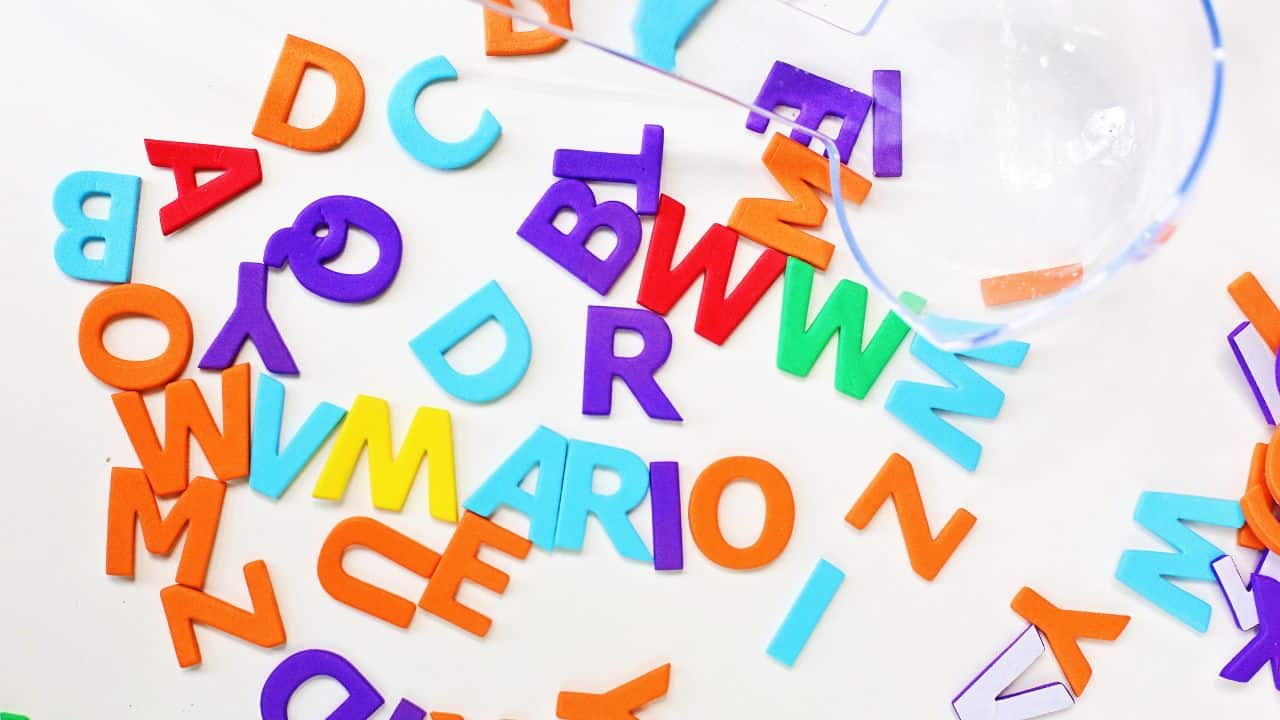
You don’t need much to throw this together—just a few simple items:
- Water (warm or cool depending on the season)
- Foam alphabet letters (the floating kind work best)
- Ladle or large spoon (bonus if it’s colorful or oversized)
Optional add-ons: a large bowl for pretend serving, a small strainer, or measuring cups for added play.
How Kids Play
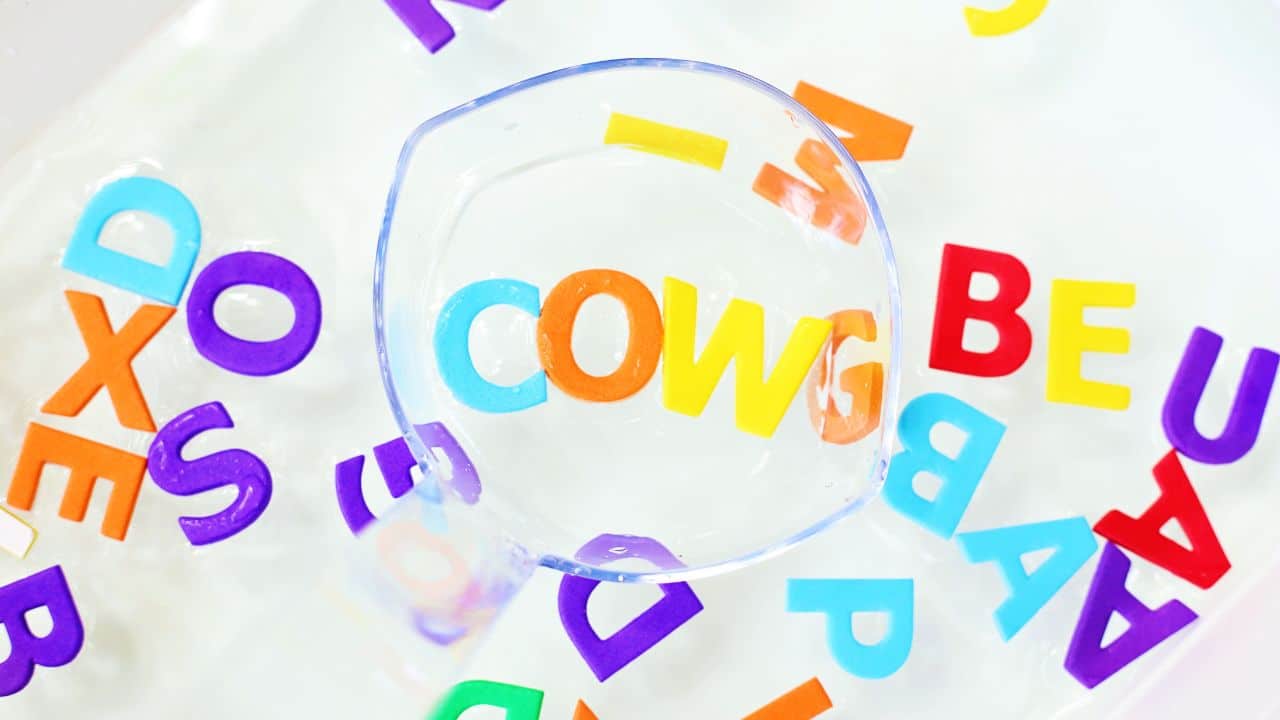
This bin is open-ended, which means kids can lead the way. Here are a few easy ideas to get them started if needed:
- Scoop and Name: As they scoop letters, encourage them to say the name or sound.
- Letter Hunt: Call out a letter and challenge them to find it.
- Spell Their Name: Ask them to scoop out the letters in their name and line them up on a towel.
- Match by Color or Shape: Sort letters by color or find all the ones with curves (like B, C, D).
This can be as structured or as free as you want—either way, they’re learning through play.
Why This Bin Works
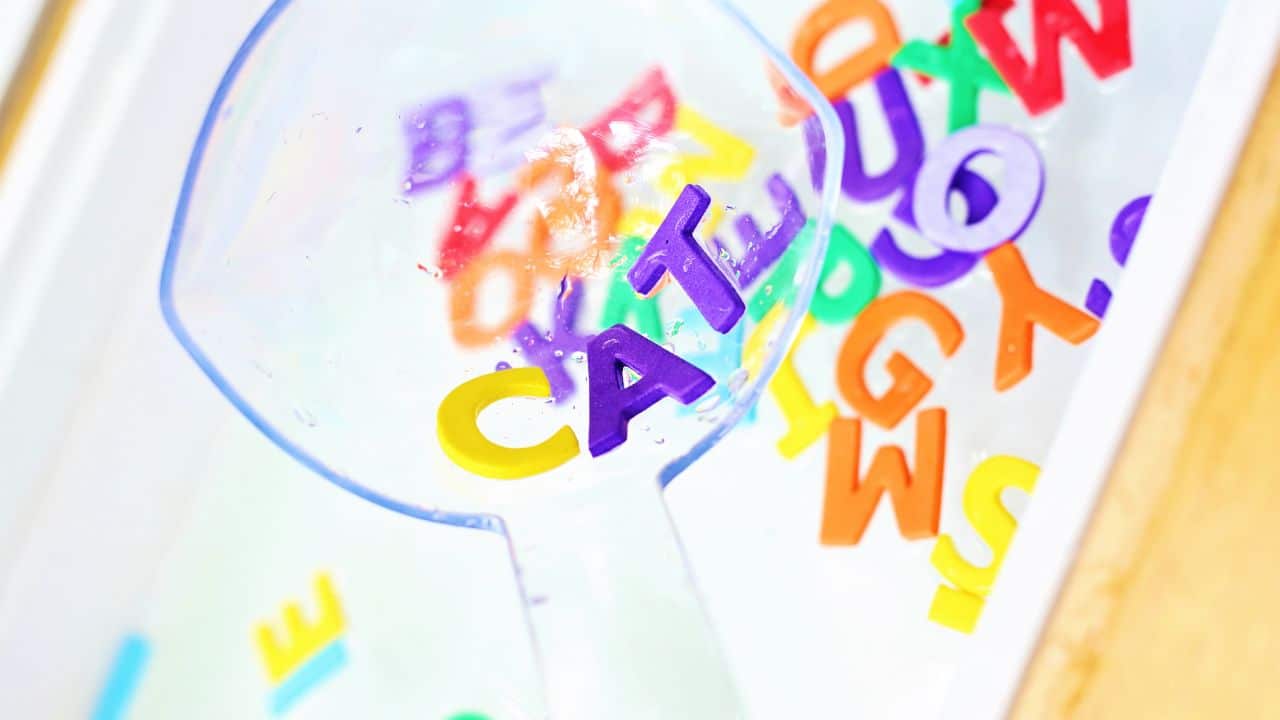
It’s more than just water and letters. This kind of play hits several key developmental areas without kids even realizing it:
- Boosts letter recognition and early literacy skills
- Builds fine motor strength through scooping, grabbing, and transferring
- Improves hand-eye coordination
- Creates a calm, focused environment through sensory play
- Promotes language development as they talk about what they’re finding. You can also sneak in phonics practice without making it feel like a lesson.
Other Fun Ways to Learn Letters and Early Reading
You know I love learning. Sensory bins are a great start, but there are so many playful ways to help kids explore letters and sounds beyond water play. Here are some simple, screen-free ideas we’re doing around here:
- Alphabet Scavenger Hunt: Hide foam or magnetic letters around the house and have your child find them. When they do, name the letter and say a word that starts with it. Bonus points if they come up with their own word!
- Letter Tracing in Salt or Sand: Pour a thin layer of salt or colored sand into a shallow tray and let your child trace letters with their finger or a paintbrush. It’s a fun way to build muscle memory for writing.
- Alphabet Books and Songs: Keep a few ABC books on hand and sing along with alphabet songs. Repetition helps build recognition and confidence. Try mixing classic songs with silly, made-up ones using your child’s name or favorite foods.
- Magnet Letters on the Fridge: Classic for a reason. Let your child rearrange and play with magnetic letters on the fridge or a cookie sheet. You can leave short messages or challenge them to find specific letters each day.
- DIY Letter Crafts: Create letters out of playdough, pipe cleaners, or cut paper. Turn them into animals or objects that start with that letter—like “B” for butterfly or “C” for caterpillar. Crafting keeps things tactile and creative.
Before You Pack It Up…
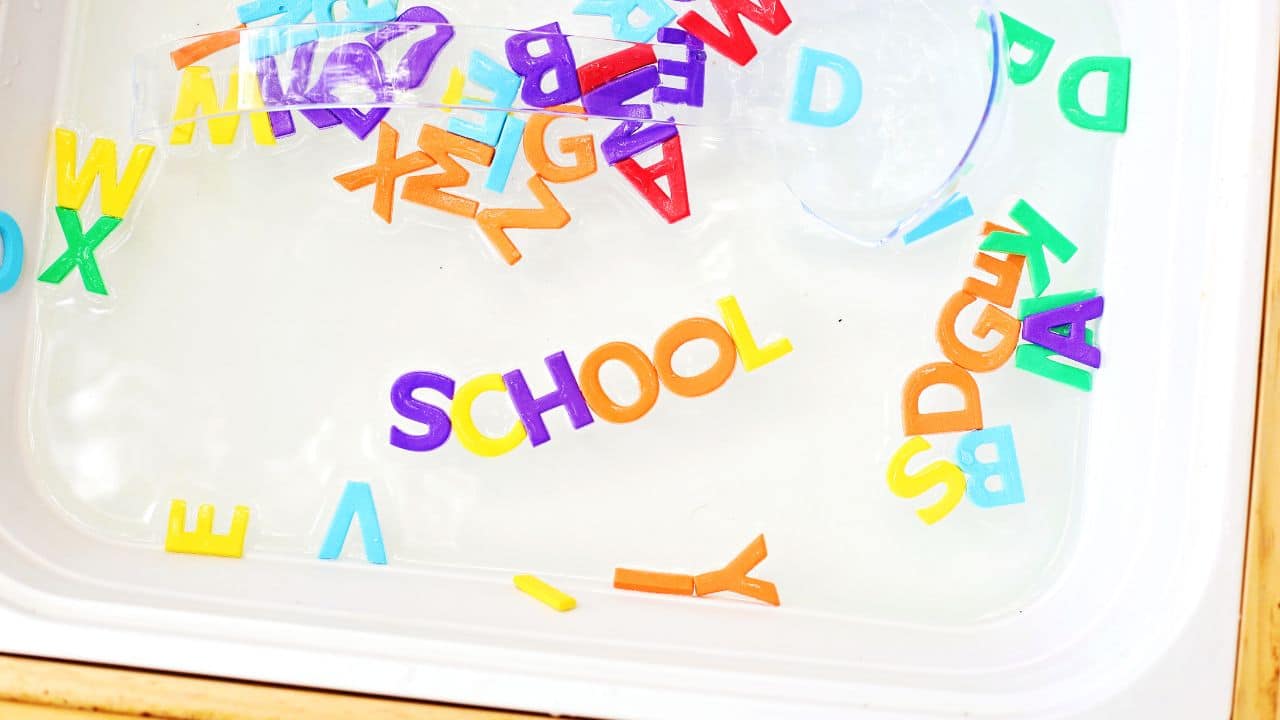
This is one of those bins you’ll want to keep around. You can dry off the foam letters and reuse them later—or even change the bin into a Number Soup, Color Soup, or a Rhyming Soup with different items.
Want to make it extra fun? Set out some play bowls and let them serve alphabet soup to their toys.
Frequently Asked Questions
What age is this sensory bin best for?
This bin works well for toddlers and preschoolers—roughly ages 1.5 to 5. Just be sure the materials are age-appropriate (larger foam letters for younger kids) and always supervise water play.
Is this safe for babies?
With close supervision and age-appropriate materials, yes. Skip small pieces and avoid letter types that could break or peel.
What if my child isn’t interested in letters yet?
That’s totally normal. You don’t need to push letter learning. Just let them explore the water, scoop and splash, and hear you name the letters as they play. Exposure is the goal, not mastery.
Can I make this bin mess-free or indoor-friendly?
Yes! Use just a small amount of water in a shallow bin, or set a towel underneath to catch spills. You can also place the whole bin on a baking sheet for easier cleanup.
Can I use other materials besides foam letters?
Yes! Plastic magnet letters (with supervision), laminated paper letters, or even letter-shaped pasta for dry bins.
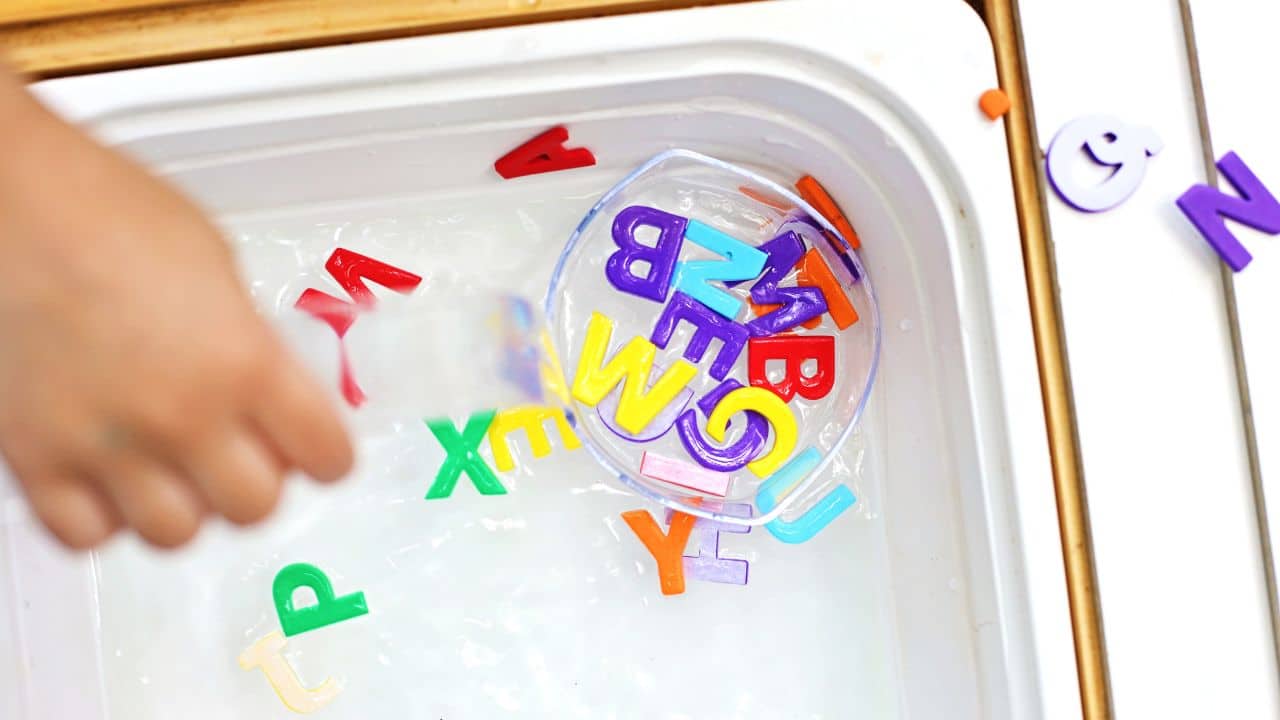
Leave a Reply